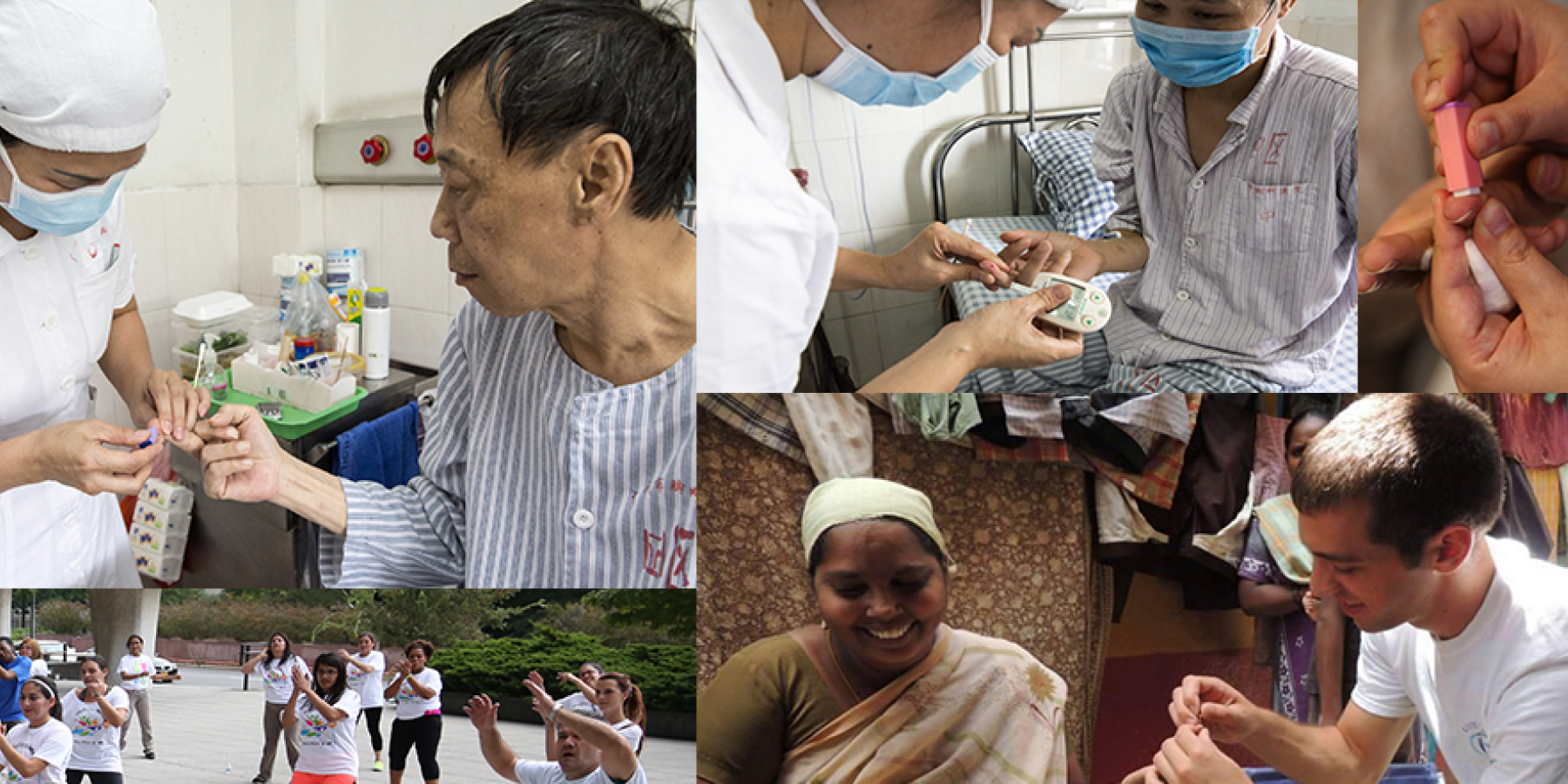Stopping the Looming Co-epidemic of Diabetes and Tuberculosis
23rd March 2016

23rd March 2016
The legendary athlete Wayne Gretzky, considered the greatest ice hockey player ever, was once asked how he became so effective. His answer? To “skate where the puck is going, not where it’s been.”
The same strategy applies to global public health. To be effective, we need to look at where an epidemic is going and take the actions necessary to stop it from getting there.
I say this, because by all accounts the evidence points to a looming global co-epidemic of diabetes and tuberculosis. This co-epidemic not only threatens the health and well-being of millions of people. It also threatens to overwhelm the capacity of healthcare systems in low- and middle-income countries around the world.
As readers of this site know, diabetes is escalating globally. The International Diabetes Federation projects that the number of people living with diabetes will skyrocket from 382 million in 2013 to 592 million by 2035. Diabetes weakens the immune system, increasing one’s risk of developing other health conditions.
Tuberculosis is an airborne communicable disease caused by a bacterial infection. TB spreads when someone sick with the disease coughs or sneezes, expelling TB bacteria into the air, and someone else inhales them. Once infected, most people continue living normally without ever becoming sick. That’s because a healthy immune system won’t eliminate the TB germs from the body, but it will seal them away inside a tiny mass of immune cells. Most people are shocked to learn that by best estimates, one in three people worldwide—a full 2 billion people—are living with this kind of TB infection.
If a person living with diabetes also has a TB infection, they face a two- to three-times greater risk that the TB infection will advance into infectious TB disease.
Diabetes is becoming more and more common in countries already grappling with high rates of tuberculosis and TB infection. Of the top ten countries projected to have the greatest numbers of people living with diabetes by 2035, the World Health Organization classifies six of them as high TB burden countries: China, India, Brazil, Indonesia, Pakistan and the Russian Federation.
We don’t have a mountain of studies yet looking at how many people with one disease are also living with the other. But the studies that are available show startlingly high rates of diabetes among TB patients: 32% in a study conducted in Karnataka State, India; 44% in Kerala State, India; 39% in Texas, USA; 36% in Mexico; 17% in Tanzania. Unpublished data from the South Pacific have shown rates of diabetes between 40% and 45% among TB patients.
The Union and the World Health Organization have developed a collaborative framework that can help countries mount a response. At its foundation is a straightforward solution called “bidirectional screening”: screen TB patients for diabetes, and in contexts where tuberculosis is common, screen people with diabetes for TB.
Beyond that, there are solutions that we need to pursue that are less technical and more about bureaucracy and culture. People working on infectious diseases usually don’t spend much time talking to people working on NCDs. Yet stopping this co-epidemic is going to take intense collaboration between these two groups. At the most basic level, this means bringing “TB people” and “diabetes people” together to create multidisciplinary teams that can pursue integrated solutions.
When HIV/AIDS became epidemic, it drove rapid increases in tuberculosis, especially in sub-Saharan Africa. Despite a wealth of evidence and a policy framework to guide a response, it took years to mobilize. Many people died in the meantime. We can’t let history repeat itself.
Leading researchers, government officials, health managers, industry partners and advocates recently issued the Bali Declaration calling for urgent action against the TB-diabetes co-epidemic. Now is the time to mobilize.
Are you a public health program manager working on diabetes or TB? A surveillance officer? An advocate? Do you know your counterparts working on the other disease? Introduce yourself. It could be the start of the most important collaboration of your life.
Look where an epidemic is going & take actions to stop it from getting there #WorldTBDay @TheUnion_TBLH
Paul M. Jensen is Senior Advisor for Policy at the International Union Against Tuberculosis and Lung Disease; @TheUnion_TBLH
Each year, 24th March is World TB Day coordinated by the Stop TB Partnership. The Stop TB Partnership is a UN hosted partnership and a collective force transforming the fight against tuberculosis. The day is intended to build public awareness for tuberculosis. A disease which despite being curable, remains a destructive epidemic in much of the world. World TB Day coincides with Dr Robert Koch’s announcement in 1882 of his discovery of the TB bacillus, the cause of tuberculosis, a research milestone which opened the way toward diagnosing and curing TB.